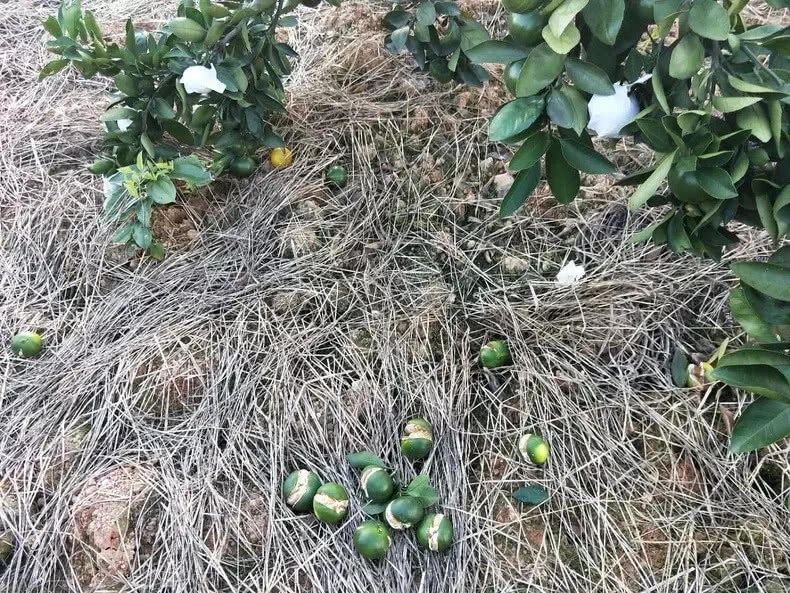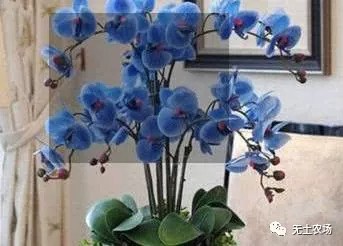Watch out for cracked citrus fruits to do a good job in these three points.

Lao Dao Note: learn agricultural skills, ask experts, check diseases, please download the agricultural steward APP.
Citrus fruit cracking phenomenon is very easy to occur before citrus harvest, and the fruit cracking rate can sometimes reach more than 40%, which seriously affects the economic income of farmers.
Recently, Liu Xinfeng, a user from Shangqiu City, sent a picture of citrus problems on the app platform of the agricultural housekeeper, asking: what happened to the citrus fruit?
Picture from: agricultural housekeeper user
The expert of the agricultural housekeeper gives the answer according to the picture display:
Lu Xianyuan (Zhongyuan District, Zhengzhou City, Henan Province, good at plant protection technology)
Cracking considering uneven water and fertilizer, sudden heavy water and fertilizer, temperature ups and downs, lack of boron and calcium caused cracking, pay attention to the rational use of fertilizer, nitrogen control, can be used potassium dihydrogen phosphate compound boron, sugar alcohol calcium spray relief, timely shading and cooling, pick the cracked fruit
Guo Xinhua (Guan County, Liaocheng City, Shandong Province, agronomist, technical station director)
Fruit cracking, lack of phosphorus and potassium fertilizer, temperature difference between high and low, uneven moisture, lack of boron and calcium and so on. Spraying calcium glycol or calcium chelate during the growing period can accelerate Leboron, control the amount of nitrogen fertilizer, balance fertilizer and water, and prevent fruit cracking.
Li Hongyi (Zhengzhou, Henan)
It may be due to excessive nitrogen fertilizer, lack of phosphorus and potassium fertilizer, high and low growth cycle temperature, lack of water in the early stage, poor flower bud differentiation, uncomfortable pollination temperature, lack of boron and calcium, and supplement of boron and calcium in advance.
The big class of agricultural butler-- to recognize the disease state of citrus peel
Harmful symptoms
First, the branches: the branches are slender, clump, and the crown is dwarfed. The bark of the rootstock split longitudinally.
Second, the leaf: the leaf is small or the green mesophyll is yellowed near the leaf vein, like zinc deficiency.
Third, floral apparatus: deformed flowers, many blossoms, serious falling flowers.
Fourth, fruit: serious fruit drop.
Fifth, the whole plant: the diseased tree is weak and the yield is very low. According to the investigation in Guizhou. The symptoms of citrus varieties with Li lemon as rootstock are as follows: the phloem of the rootstock is longitudinal. Dehiscence, shoot shortening, plant dwarfing, only up to 1/3 of the height of the normal plant. The crown width is small, the yield is reduced.
Fruit symptoms of split skin disease
Morbidity regularity
The symptom of split skin disease is relatively rapid in some plants and can be used as an indicator for identification, such as on the leaves of Lamplet lemon and incense rafters for 3 to 6 months. The new shoots of the former showed long macula and the bark cracked longitudinally, while the leaves of the latter bent backward and corked and necrotic and cracked in the midvein on the back of the leaves. Petunia, Panax notoginseng and Panax notoginseng showed symptoms after 6-8 weeks, the symptoms were midrib necrosis and cracking, leaves erect and curled, and growth was inhibited.
Agricultural prevention and control
First, using stem tip grafting virus-free method to cultivate disease-free seedlings. The mother tree was identified by the Arizona 861 strain of Itlog Citron as an indicator plant. It was proved that the disease-free plant could only be collected and propagated, and the virus-free plant could also be cultivated by stem tip grafting.
Second, strict quarantine should be carried out to prevent the spread of diseases.
Third, once individual diseased plants are found in the orchard, they should be dug up and burned in time.
Medication reference
24% mixed fat copper sulfate water emulsion (low toxicity) is sprayed with 78-117 ml / mu
1.2% octylamine acetate water agent (low toxicity) is sprayed with 233-350 ml / mu
5.9% Xanthobacterium morpholine guanidine water agent (low toxicity) is sprayed with 152.5-222.5 ml / mu
1% lentinan water agent (slightly toxic) is sprayed with 83-125ml / mu.
8% Ningnanmycin water agent (low toxicity) is sprayed with 75-104 ml / mu
13.7% Sophora flavescens Sulphur Water Agent (low toxicity) is sprayed with 133-200ml / mu
6% oligosaccharide water agent (low toxicity) is sprayed with 62-83 ml / mu
3% aminooligosaccharide water agent (low toxicity) is sprayed with 20-30ml / mu
Hello, guys.
- Prev

Do you know when not to fertilize orchids? I'll give you some tips.
Fertilizer quality directly harms the growth of bluegrass, daily maintenance process needs to have a degree, otherwise the words will be counterproductive, there are many kinds of fertilizer: organic fertilizer, slow-release fertilizer, foliar fertilizer. Which kind of bluegrass is suitable for you?
- Next

If you have this plant at home, don't buy it again. I'll teach you how to reproduce a pot from a leaf.
Rubber tree is a common foliage plant in families. It not only has high ornamental value, but also can effectively absorb dust particles in the air. If you want to raise rubber trees, you don't have to spend any more money. A leaf grows into a rubber tree. Follow the small...
Related
- Wuhan Hospital Iron Tree Blooming Result Was Instantly Frightened by the Gardener Master
- Which variety of camellia is the most fragrant and best? Which one do you like best?
- What is the small blue coat, the breeding methods and matters needing attention of the succulent plant
- Dormancy time and maintenance management of succulent plants during dormancy
- Minas succulent how to raise, Minas succulent plant pictures
- What are the varieties of winter succulent plants
- How to raise succulent plants in twelve rolls? let's take a look at some experience of breeding twelve rolls.
- Attention should be paid to water control for succulent plants during dormant period (winter and summer)
- Watering experience of twelve rolls of succulent plants
- Techniques for fertilizing succulent plants. An article will let you know how to fertilize succulent plants.

